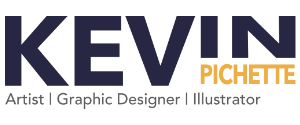The Art of Digital Portraiture
In the realm of art, the transition from traditional mediums to digital platforms has been a significant evolution, and digital portraiture stands as a testament to this transformation. Digital portraits offer a unique blend of traditional artistic principles with the innovative capabilities of modern technology, allowing artists to explore new horizons of creativity.
The Process of Creating Digital Portraits
Creating a digital portrait begins with the same foundational step as any traditional portrait: understanding the subject. Artists often start with a photograph or live model as a reference, studying the nuances of the subject’s features, expressions, and personality traits that make them unique.
Once the reference is set, the artist selects their digital tools. Software like Adobe Photoshop, Corel Painter, or Procreate offers a plethora of brushes, textures, and effects that mimic traditional painting techniques. Artists can choose from a variety of styluses and drawing tablets that translate their hand movements onto the digital canvas with precision.
The actual drawing process involves layering, a technique that allows artists to work on different aspects of the portrait separately without affecting other elements. This could mean starting with a sketch layer, adding a base color layer, and then progressively building up shadows, highlights, and details in additional layers.
Advantages of Digital Over Traditional Portraiture
One of the most significant advantages of digital portraiture is the ability to experiment without the fear of making irreversible mistakes. With the undo function, artists can try bold strokes or color combinations, knowing they can revert to a previous state if needed.
Another benefit is the vast array of tools and resources available at the artist’s fingertips. Brushes that simulate watercolor, oil paint, or charcoal can be switched in an instant, and custom brushes can be created to achieve specific effects.
Moreover, digital portraits are easily shareable and can be reproduced without any loss of quality. This makes them ideal for online portfolios, social media, or printing on various mediums.
Challenges and Considerations
Despite the advantages, digital portraiture does come with its challenges. The learning curve for mastering software and hardware can be steep for those accustomed to traditional methods. Additionally, the artist must have a keen eye for color calibration to ensure that what they see on their screen is what gets printed or displayed on other devices.
Furthermore, the debate between the authenticity of digital versus traditional art is ongoing. Some purists argue that digital art lacks the tactile quality of paint on canvas. However, many in the art community appreciate digital art for its own merits and the unique opportunities it provides.
Conclusion
Digital portraiture is not just a modern trend; it’s a new frontier in the art world. It allows artists to push the boundaries of their creativity and reach audiences in ways that were not possible before. As technology continues to advance, we can only expect digital portraiture to become even more dynamic and integrated into the fabric of artistic expression. Whether you’re an artist or an art enthusiast, exploring the digital landscape can be a rewarding journey into the future of portraiture.


 Kevin Pichette
Kevin Pichette Kevin Pichette
Kevin Pichette
Leave a Reply
Want to join the discussion?Feel free to contribute!